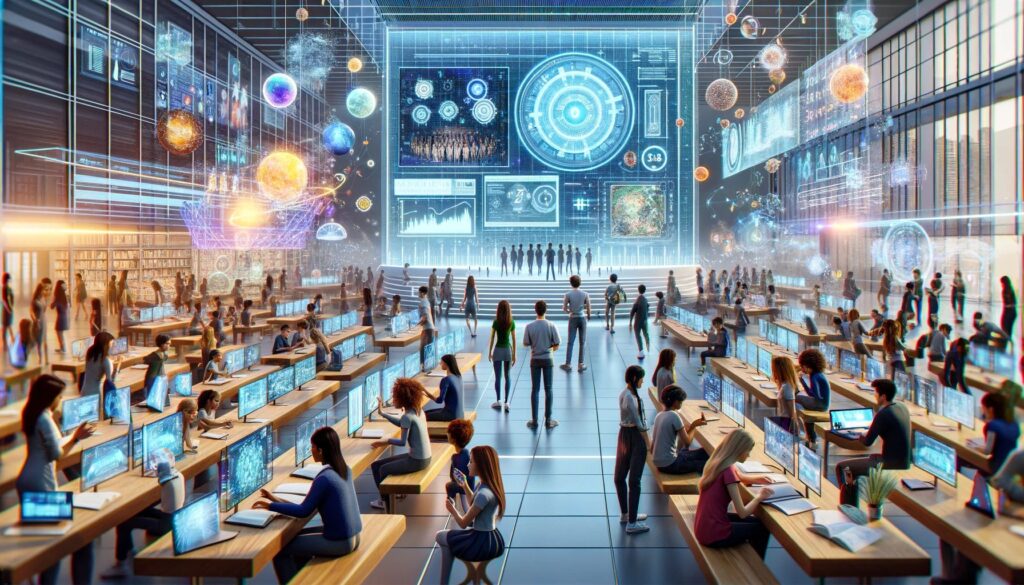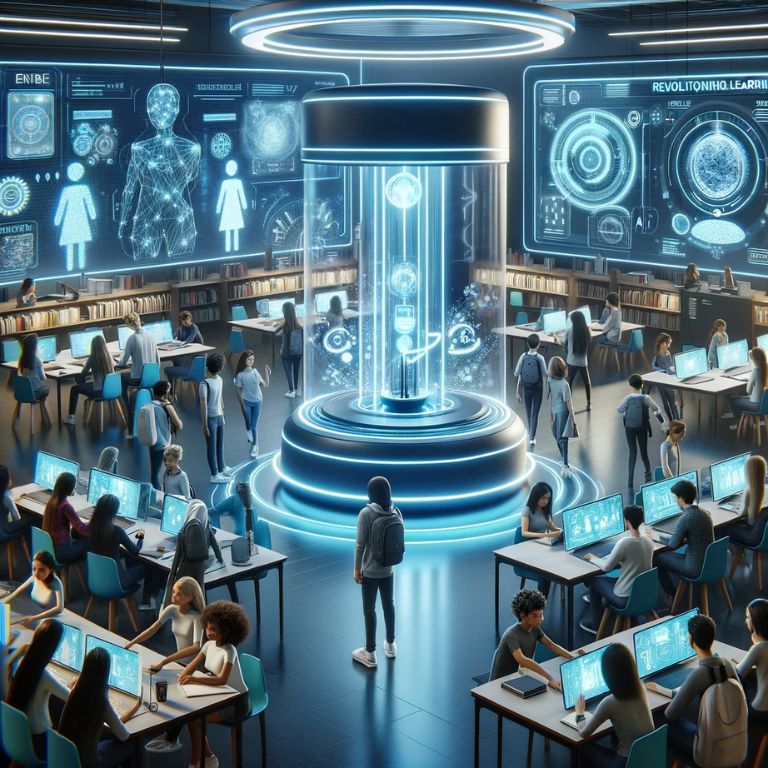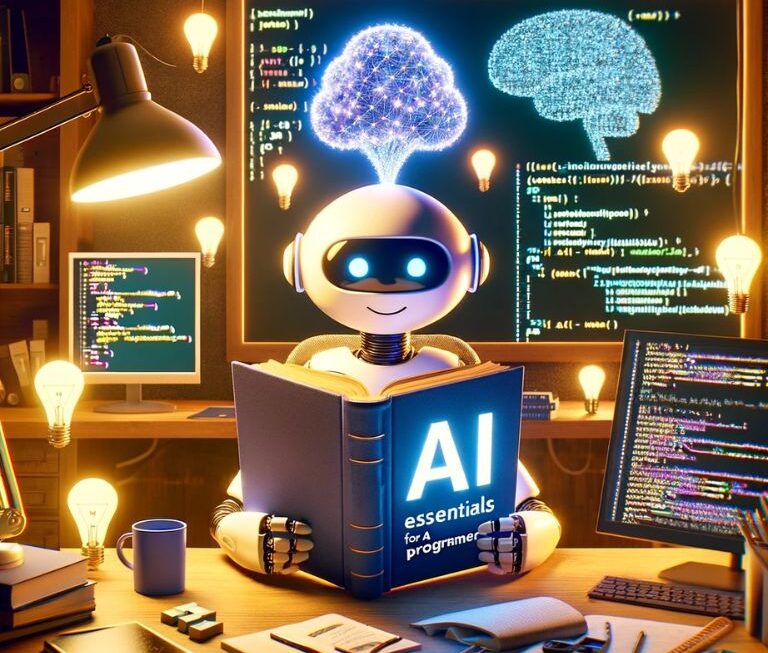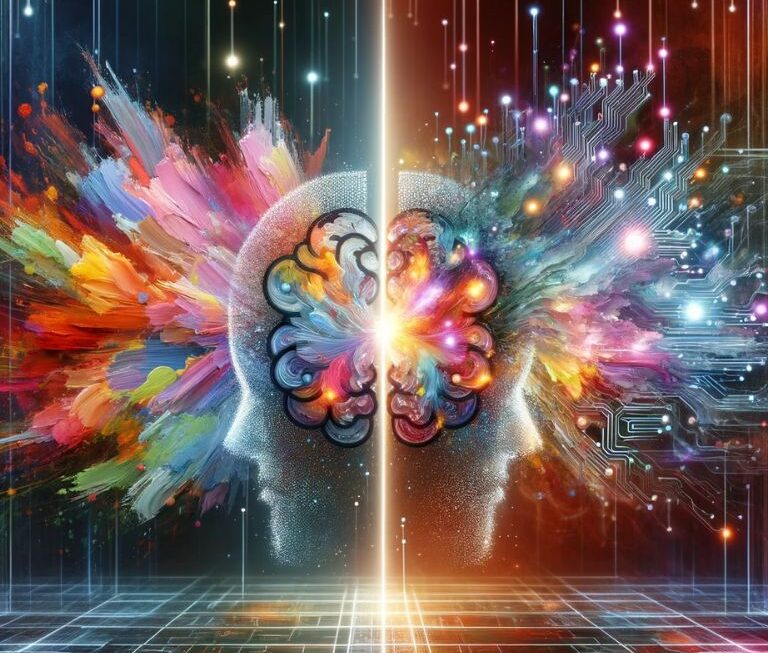The realm of education is on the brink of a transformative era, driven by the integration of advanced technologies like Generative Artificial Intelligence (AI). This innovation promises to reshape how we approach learning, making it more personalized, effective, and accessible than ever before.
The Rise of Generative AI
Generative AI refers to a category of artificial intelligence that can create content, from text to images, and even interactive educational materials. Unlike traditional AI, which typically analyzes and responds to input, generative AI can produce new, original content, learning and adapting as it does so. This ability positions it as a powerful tool in the education sector, where the demand for personalized learning experiences is increasingly growing.
The Need for Personalized Education
In traditional educational settings, a one-size-fits-all approach often prevails. However, this method overlooks the diverse learning styles, paces, and interests of individual students, potentially hindering their ability to engage with and absorb material effectively. Personalized education, tailored to the unique needs of each learner, has long been seen as a solution to this challenge. Generative AI holds the key to unlocking this potential, offering customized learning experiences at a scale previously unimaginable.
| Feature | Traditional Learning | AI-Enhanced Personalized Learning |
| Content Delivery | One-size-fits-all approach | Tailored to individual learning styles |
| Pace | Uniform for all students | Adjusts to individual learning speeds |
| Engagement | Limited interaction | Interactive and immersive experiences |
| Adaptability | Static curriculum | Dynamic, evolving with student’s progress |
| Feedback | Periodic and general | Real-time and specific to each learner |
Generative AI in education is not just about automating processes; it’s about enriching the learning journey for each student. By leveraging AI, educators can develop curricula that adapt to each student’s learning style and pace, making education more effective and enjoyable.
This new era of education will see AI not as a replacement for the human touch in teaching but as a powerful ally, augmenting the capabilities of educators and enabling them to focus on what they do best – inspiring and guiding students.
Understanding Individual Learning Styles
Categorizing Different Learning Styles
To effectively personalize education, it’s crucial to recognize that students absorb and process information differently. Broadly, learning styles can be categorized into four primary types:
- Visual Learners: These learners understand and retain information better when it’s presented in a visual format such as charts, graphs, and diagrams.
- Auditory Learners: They prefer listening to information and learn best through lectures, discussions, and verbal instructions.
- Reading/Writing Learners: This group excels when engaging with written words. They prefer reading texts and writing notes.
- Kinesthetic Learners: These learners are hands-on and learn best through doing, experiencing, and engaging in physical activities.
The Role of AI in Identifying Student Preferences
Generative AI serves as a dynamic tool in education by analyzing student data, such as interactions and response patterns, to discern individual learning styles. For instance, if a student favors interactive simulations over text-based content, AI can identify kinesthetic or visual preferences. Furthermore, AI’s swift data analysis enables continuous adaptation of educational materials, responding to shifts in learning preferences in real time. This personalized approach ensures that each student engages with content tailored to their unique learning style, making the learning process highly efficient and effective.
Customizing Learning Materials with AI
AI Algorithms in Content Creation
Generative AI is revolutionizing content creation in education by producing a diverse array of learning materials tailored to individual needs. Using advanced algorithms, AI can generate text, create visual aids, and even develop interactive elements that cater to various learning styles. For instance, for visual learners, AI might create intricate diagrams or infographics, whereas for auditory learners, it could generate podcasts or narrative explanations. This technology goes beyond merely presenting information; it crafts content that resonates with each learner’s unique way of understanding the world, thereby enhancing comprehension and retention.
Adapting to Individual Learning Pace and Complexity
AI in education tailors learning to each student’s pace, offering a dynamic, personalized experience. It adjusts content complexity and speed, providing extra help or advanced challenges as needed. This adaptive approach ensures comfortable, optimally challenging progression, transforming education into a responsive, engaging journey. The next sections delve deeper into how AI enhances engagement and offers data-driven insights for continuous learning improvement.
Enhancing Engagement Through AI-Driven Methods

Interactive and Immersive Learning Experiences
AI-driven methods are transforming the educational landscape by offering interactive and immersive learning experiences. These experiences go beyond the conventional classroom setup, engaging students in virtual environments where learning is not just observed but experienced. For instance, virtual reality (VR) simulations powered by AI can transport students to historical sites or inside a human cell, providing a first-hand understanding of the subject matter. Such immersive experiences cater to various learning styles, particularly benefitting kinesthetic learners who thrive on active participation. The interactivity inherent in these methods also helps in retaining attention and improving comprehension among students, making learning more effective and enjoyable.
Gamification and Its Impact on Motivation
Gamification in education, enhanced by AI, offers powerful ways to boost student engagement and motivation:
- Achievement: Unlocking levels and earning badges fosters a sense of accomplishment.
- Competition: Leaderboards drive students to outperform their peers.
- Curiosity: Game-like scenarios spark interest and encourage exploration.
- Feedback: Instant feedback in games helps students track progress and identify areas for improvement.
Data-Driven Insights for Continuous Improvement
Monitoring Student Progress with AI
AI plays a pivotal role in monitoring student progress, offering a nuanced understanding of each learner’s journey. Through the collection and analysis of data points such as quiz scores, time spent on tasks, and interaction patterns with different types of content, AI systems provide educators with a comprehensive view of a student’s academic performance. This continuous monitoring allows for the identification of strengths, weaknesses, and trends in learning behaviors. By leveraging AI for these insights, educators can promptly address any learning gaps and acknowledge areas where students excel, thus fostering a more supportive and effective educational environment.
Adjusting Teaching Strategies Based on Data Analysis
AI-driven data analysis offers valuable insights for refining teaching strategies, including:
- Content Customization: Tailoring content difficulty and type to meet individual learning needs.
- Feedback Timing: Providing timely feedback based on each student’s learning pace.
- Grouping Strategies: Forming study groups based on similar learning styles or areas of improvement.
- Instructional Methods: Adapting teaching methods to cater to diverse learning preferences.
- Resource Allocation: Allocating resources to address consistent challenges in specific topics.
Challenges and Ethical Considerations
Addressing Privacy Concerns
As AI becomes more integrated into educational systems, addressing privacy concerns is paramount. The vast amount of data collected and analyzed by AI systems, including personal and academic information, raises significant privacy issues. It is essential for educational institutions and technology providers to implement robust data protection measures. This includes ensuring data encryption, securing storage systems, and setting clear boundaries on data usage. Transparency with students and parents about what data is collected and how it is used is also crucial. Moreover, compliance with data protection regulations like GDPR or similar legislation should be a top priority to safeguard the privacy and trust of all stakeholders involved.
Ensuring Equitable Access to Technology
Ensuring equitable access to AI in education involves:
- Affordability: Making AI-driven tools affordable for all socioeconomic groups.
- Infrastructure: Ensuring schools and communities have required internet and devices.
- Training: Providing educators with training to effectively use AI tools.
- Inclusivity: Designing AI systems for diverse learning needs, including disabilities.
- Digital Literacy: Enhancing digital skills among students and educators.
The Outlook for Education in the Age of Generative AI

Predictions and Potential Advancements
The integration of Generative AI into education is not just a fleeting trend; it’s shaping up to be a fundamental shift in how we approach learning and teaching. The future of education with AI holds immense possibilities, including:
- Hyper-Personalized Curricula: AI systems could design curricula that adapt in real-time to each student’s progress, interests, and learning style.
- Automated Content Generation: Advanced AI could create a vast range of educational materials, from textbooks to interactive simulations, tailored to the curriculum.
- Global Classroom Connectivity: AI might enable seamless connectivity between classrooms worldwide, fostering global collaboration and learning.
- Predictive Analytics: AI could predict learning outcomes and career paths, guiding students towards subjects and skills where they are most likely to excel.
- Augmented Reality (AR) Learning: Enhanced AR environments could provide more immersive and interactive learning experiences than ever before.
Preparing Educators for an AI-Integrated Future
As education integrates AI, the focus shifts to equipping educators for this era. They must transition from knowledge providers to facilitators, guiding AI-driven learning and fostering critical thinking. Crucial is their role in ensuring AI’s ethical classroom use, necessitating ongoing professional development and adaptability. This AI-rich future promises revolutionary changes in teaching methodologies and boundless potential for educational innovation.
Conclusion
Integrating Generative AI into education signals a revolutionary shift, transforming it into a more personalized, engaging, and inclusive journey. AI’s potential to create hyper-personalized experiences and provide real-time insights promises to democratize education, but challenges like ethical considerations and equitable access must be addressed. Educators’ transition to facilitators is vital for successful integration. Collaboration among technologists, educators, policymakers, and students is essential to fully harness AI’s potential, paving the way for an unprecedented educational era.




